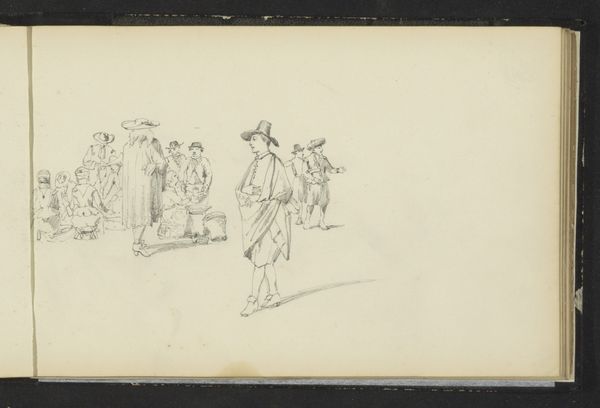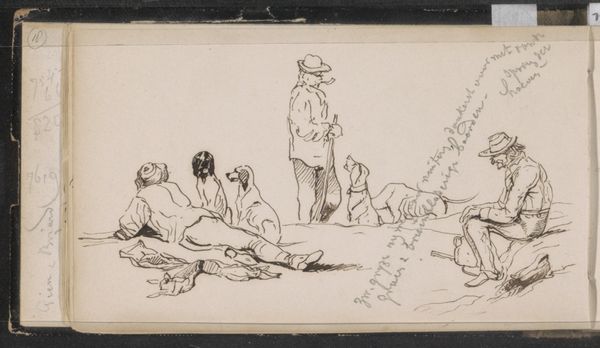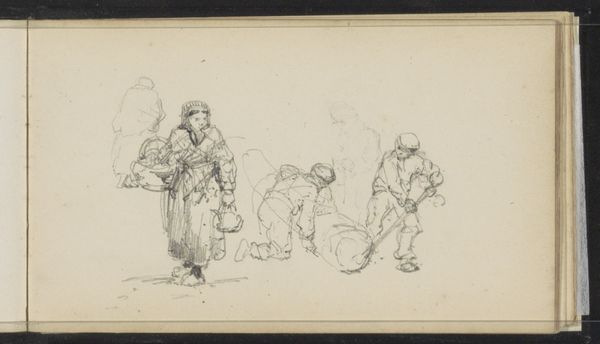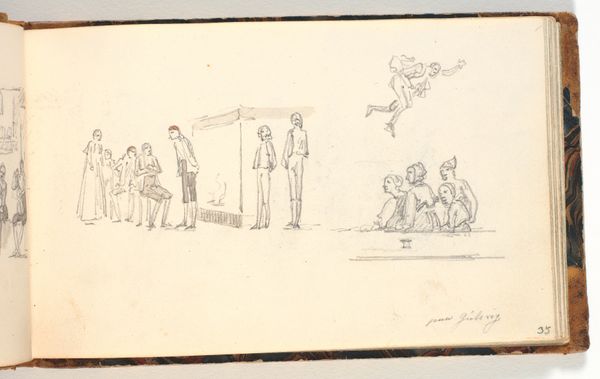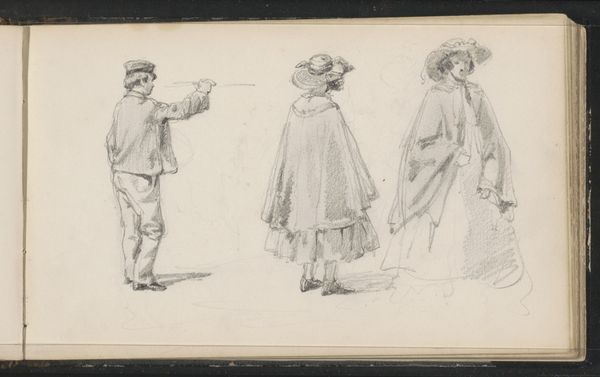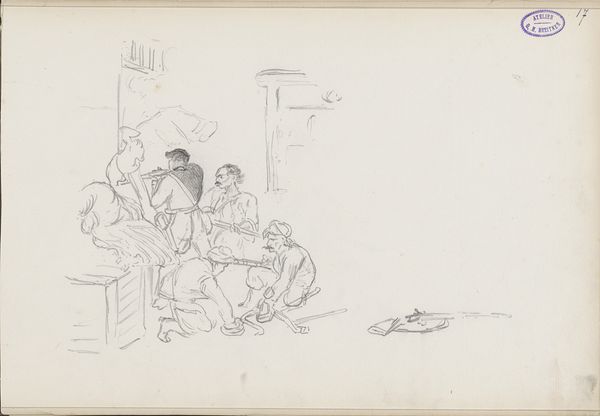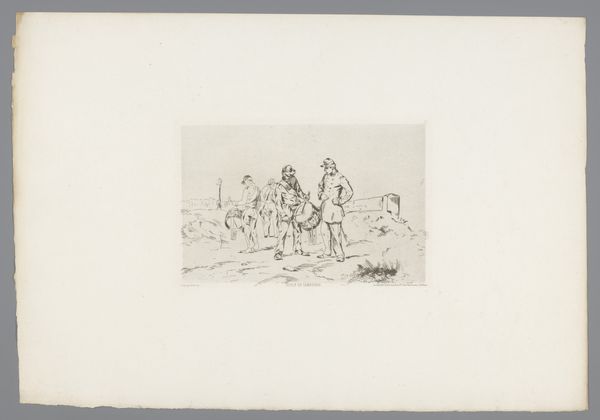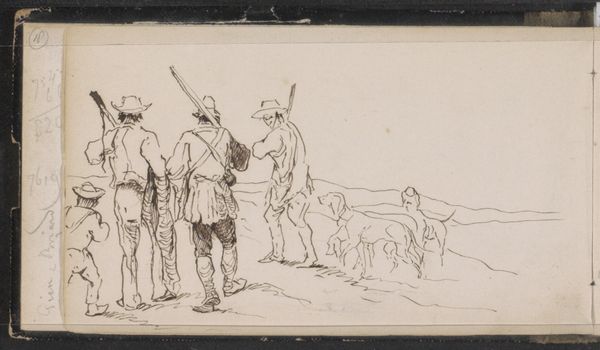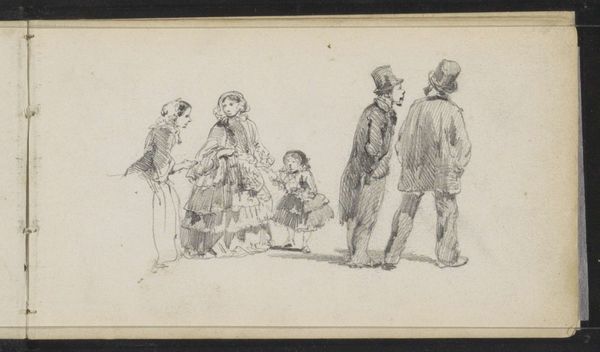
drawing, paper, pencil
#
portrait
#
drawing
#
figuration
#
paper
#
child
#
pencil
#
genre-painting
Copyright: Rijks Museum: Open Domain
Curator: Look at this sheet of figure studies by Cornelis Springer, dating from around 1856 to 1861. What's your immediate take on this grouping? Editor: I’m struck by the starkness. The roughness of the pencil on the paper suggests an immediacy. It feels less like high art and more like someone jotting down observations of daily life and labor. Curator: Indeed, these sketches masterfully employ line and form. Note the swift, confident strokes capturing each figure’s gesture and weight. Springer isn't interested in embellishment here, focusing instead on distilling human form to its essential lines. The use of the pencil medium accentuates this structural approach. Editor: I agree about the distillation, but what interests me are the figures themselves. A woman bending over, possibly tending to something on the ground, a child hauling a container – there’s a sense of work, of physical effort imbued in each sketch. It prompts questions about what they are doing, the value and dignity of such everyday tasks at that historical moment. Curator: The beauty here lies precisely in Springer's skillful rendition of posture. Look at how the line quality itself seems to articulate each subject’s relationship to gravity and space, effectively freezing figures in fluid arrangements and allowing the page itself to almost vibrate with implied motion. Editor: But it's the material reality of that effort that resonates, surely? What resources, what tools are these people using? Are these sketches records of the social realities – the roles and expectations – imposed upon them in 19th-century Netherlands? Curator: While social context may certainly be relevant, one cannot ignore the interplay between positive and negative space in each grouping. Consider the careful composition as a purely aesthetic experience, how they inform each other, creating a visual harmony which transcends subject matter alone. Editor: Ultimately, the way Springer has worked with his materials allows a glimpse into a specific time, labor and people and their hard working conditions which could offer a window into our understanding the labor issues that time. Curator: Yes, indeed; examining Springer’s strategic pencil application in tandem with representational aspects opens avenues to varied aesthetic appreciation and further inspection.
Comments
No comments
Be the first to comment and join the conversation on the ultimate creative platform.
